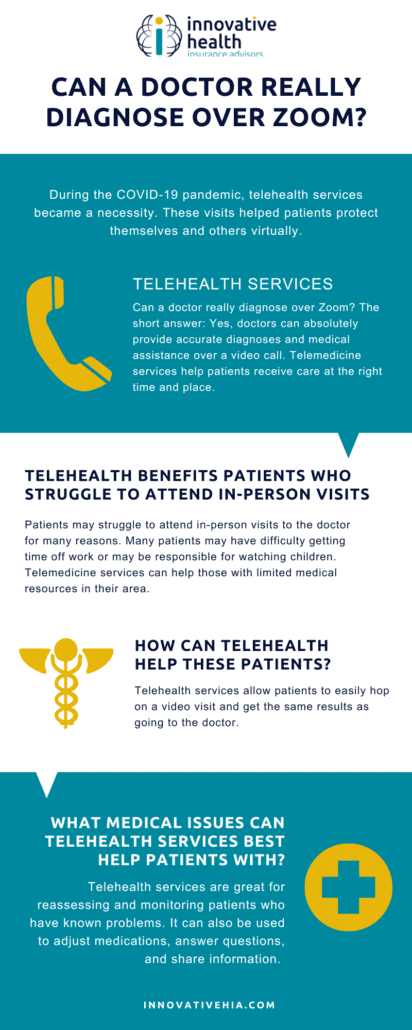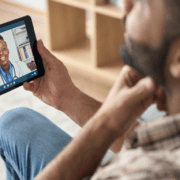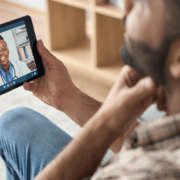Telehealth: Can a Doctor Really Diagnose Over Zoom?
During the COVID-19 pandemic, telehealth services, such as Zoom diagnoses, became a necessity. These phone and video calls help patients protect themselves and others by quarantining and remaining safely in their homes.
However, after years of visiting healthcare professionals in person, many patients can’t help but ask the question: Can a doctor really diagnose over Zoom?
The short answer: Yes, doctors can absolutely provide accurate diagnoses and medical assistance over a video call. Telemedicine services help patients receive the care they deserve at the right time and place.
Read on to learn more about how to utilize telehealth services. Let’s start with a definition.
First, What Are Telehealth Services?
Telehealth, also commonly referred to as common medicine, allows healthcare providers to connect with patients without an in-person visit. Telehealth services are provided primarily online or via smartphone through video chats or phone calls.
Why is the American Medical Association Maximizing Telemedicine Service Options?
The American Medical Association is working to maximize telemedicine service options to revolutionize healthcare. While the highly contagious nature of the COVID-19 virus drove this change, telehealth can help patients facing other medical issues or illnesses as well as those who may struggle to get to the doctor in person.
How Can Telehealth Help Patients Who Struggle Going to the Doctor?
Patients may struggle to attend in-person visits to the doctor for many reasons. For example, many patients may have difficulty getting time off work or may be responsible for watching children at home and find it challenging to find a sitter.
Additionally, telemedicine services can also help those who have had non-urgent medical care postponed due to the pandemic or patients whose medical resources are greatly limited in their area.
Patients should not have to receive less than the medical care they deserve because of these difficulties. Telehealth services allow patients to easily hop on a video visit and get the same results as going to the doctor.
So, How Exactly Does Telemedicine Work?
Drs. Francavilla Brown and Boyd told AMA that telemedicine “is easier than people think it is to incorporate into a practice.”
With technological advancements typically come progress and challenges. Physicians who have tried implementing telemedicine have identified these challenges, and have come up with a few solutions.
One challenge is patients may not have a good signal to support their doctor’s visit. The trouble with a weak signal may make the appointment longer, or impossible for someone who really needs it. Another challenge physicians have identified is booking appointments to be a televisit for doctor’s offices. The patient must call the office to ensure their appointment is virtual.
What Medical Issues Can Telehealth Services Best Help Patients With?
While telehealth services may not be the best option for detecting major issues, it has been great for reassessing and monitoring patients who have known problems. It can also be used to adjust medications, answer questions, and share information.
These services also help people avoid unnecessary hospital visits, which helps to give advice at a distance, save time, and reduce costs for both patients and doctors. Not only will it help avoid hospital visits when they aren’t necessary, but it will also give patients in the hospital the ability to discharge sooner by monitoring their vitals with telemedicine.
Looking for Telehealth Services?
Virtual visits with your doctor may begin to become the new normal in a post-COVID world. At Innovative HIA, we offer telemedicine services at competitive prices. Learn more about our services.

Read on for the pros and cons of telemedicine.









